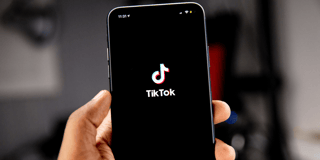Contributors
-
 Written by Tommy Albrecht
Written by Tommy AlbrechtPerformance Marketing Manager at Funnel
Guess what? The advertising industry is getting a massive makeover, and it's all thanks to Artificial Intelligence (AI) and machine learning. Research indicates that almost 70% of high-performing marketing teams have a well-defined AI strategy. AI-powered tools help them create personalized and targeted campaigns and can optimize ad performance through data analysis.
A study conducted by Boston Consulting Group highlights that organizations can achieve higher marketing performance by combining the strengths of human and AI capabilities. Therefore, it is crucial for businesses to have an in-depth understanding of AI's abilities and challenges to effectively leverage these technologies. Let’s look at three ways in which AI and machine learning tools have influenced the advertising and marketing industries.
1. More power to the algorithm often means less data for you
Performance marketers are using AI algorithms to identify new subsets of audiences or analyze the behavior of existing audiences. It enables them to tailor their digital marketing campaigns accordingly. An algorithm can optimize based on hundreds of data points in just a few seconds. That's something a marketer can never do, since it would take way more time to go through all the available data, spot the trends, and decide on optimizations.
Although it has all these benefits, adopting automation in marketing can be challenging for marketers who are not used to relinquishing control. That's because automation requires you to trust the algorithms entirely and be comfortable with letting them do their job.
Additionally, more power to the algorithm implies less data for you. Data plays a critical role in improving marketing strategies for goods and services. By analyzing performance data across various channels and marketing styles, including social media, content marketing, email, PPC, and SEO, businesses can adopt a data-driven marketing approach that helps identify areas for optimization and improvement.
An algorithm can be a black box
Automation involves using black-box approaches based on complex algorithms or a machine-learning model to automate ad placement, targeting, and optimization decisions. For instance, Google Ads has introduced a new campaign type called Performance Max. It enables performance advertisers to access their entire inventory from a single campaign.
Performance Max is similar to smart shopping campaigns operating as a black box. So, you can see the results for top-performing audiences without getting any customer data on what is performing and why. It implies that you cannot reach conclusive results that can be used to optimize an ad campaign.
Related Reading: The best practices for Google Performance Max
More targeted and relevant ads
Dynamic search ads (DSA) are another form of AI-powered advertising. DSA campaigns utilize Google's AI technology to automatically generate headlines and ad descriptions based on website content, which match relevant search queries. This AI-powered approach results in more targeted and relevant ads for users, with minimal manual effort from marketers. By leveraging AI to streamline the ad creation process, DSA campaigns can help businesses save time and resources while delivering more effective advertising.
While the black box approaches can be highly effective, their performance may vary depending on a campaign's specific needs and goals. Also, insufficient data can impact the performance of these models, as they require substantial data to train effectively. So, if a campaign doesn't have access to enough data, the model's performance may not be up to the mark.
In addition, the effectiveness of these models is also dependent on their integration with other campaign tools. For instance, if a campaign uses a CRM system to monitor customer data but its integration with the model is weak, it cannot make accurate predictions due to insufficient data. Even if the model is sophisticated, you will get suboptimal performance. Therefore, the key to using algorithms is to test and see if they work for your needs before going all-in.
Using AI in moderation
Additionally, you are wasting money and effort if you are trying to use single-keyword ad groups or manage bids by hand for many keywords. These algorithms are excellent at optimizing keyword management and bids, budget pacing, and frequency capping. At the same time, that does not mean you must always go with the newest algorithmic advertising offered by an ad platform.
To benefit from advertising technologies and strategies, it's crucial to stay updated with the latest advancements and evaluate whether they are compatible with your business goals.
It's worth noting that newer algorithms and advertising platforms may offer advanced features, but they might not necessarily be the best fit for your specific advertising needs. So, it's good to analyze your target audience, budget, and advertising objectives before zeroing in on the most appropriate advertising tools and algorithms.
2. Generative artificial intelligence is exploding right now
According to a Salesforce survey, more than half of marketers are presently employing generative AI to personalize website experiences for customers. At the same time, an additional 27% intend to do so in the next two years.
Generative AI is a form of machine learning that can produce fresh content and generate lifelike images and videos. It uses algorithms and neural networks. It also employs deep learning to generate more realistic and accurate content.
Its capacity to learn and adapt has made generative AI an essential resource for individuals and enterprises. A great example is the American food processing company Heinz, which employed generative AI to create images for its advertising. The company utilized DALL-E 2, an image generation tool, to design an image of a ketchup bottle with a label closely resembling Heinz.
The image was generated by training the model on a substantial collection of Heinz ketchup bottle images. It helped the tool produce an image that was virtually identical to the real product. Now many companies across the globe are using AI in advertising to replicate a brand's visual identity. Also, marketers are using ChatGPT or other AI chatbots to understand their audience, create ad copy, and build landing pages.
Generative artificial intelligence is expected to evolve in the coming times and become better at natural language processing and machine learning applications. It will enhance ad targeting, resulting in more personalized and effective marketing campaigns.
The nuances of human behavior
Although AI in advertising can provide valuable insights, human judgment, and creativity are still necessary to understand the context and apply these insights to specific situations. Additionally, AI cannot fully understand the nuances of human experience. This is because AI is trained on historical data, and its decisions are based solely on patterns and correlations in that data.
As a performance marketer, you can try generative AI to create images using DALL-E or Midjourney and ad copy using ChatGPT. But you should still utilize human creative thinking and decision-making skills. While using ChatGPT to generate keywords, ideas, or blog posts, use simple and direct prompts to get better results. For instance, here are three straightforward search queries that will give you focused results:
- What would a person buying running shoes search for on Google?
- What are the biggest problems and questions a person has when buying XYZ?
- What challenges do persona X or ICP have?
All these queries give you valuable information in just a few seconds. Another significant benefit of generative AI tools is their ability to iterate. If you have copy that is functioning well, you can employ generative AI to make it longer or shorter or even come up with multiple versions of the same message. It can be very useful for A/B testing, in which these multiple alternatives can be tested to select the most effective option.
Remember that there is a lot to test when using an AI solution for your business. Keep an open mind and be willing to iterate and adapt as you explore the possibilities of AI and machine learning in marketing.
3. Algorithms and AI will work better with better input
Did you know that search engines on the World Wide Web were initially designed to perform keyword searches? Users would enter specific keywords to find relevant web pages containing them. Over time, a keyword search was augmented with the search for metatags, synonyms, context, and semantics of the search words, among other techniques.
In the age of AI, you need to provide the right prompts to get the best results. Prompts are short text inputs used to instruct AI models to perform specific tasks, such as generating text and images or automating a sequence of steps.
The AI model utilizes these prompts as a reference to generate an appropriate response or output. Smart prompts will result in better responses from the generative AI, and enhanced input data will result in improved performance in AI-run advertising campaigns.
As noted above, apart from generating ad copy and video, prompts can be used to analyze consumer data and identify the common behaviors or characteristics of the target audience.
Remember, it is vital to feed the algorithm the correct data. For instance, if you optimize for clicks, the AI tool will provide you with the most clicks. But if you are a B2B organization with complex sales cycles, it may not be enough to optimize clicks. In such instances, you may want to optimize for lead quality or pipeline acceleration rather than just focusing on clicks. So, you must provide data signals and specific goals to the AI tool that align with your business goals. The better input you provide regarding instructions and signals, the more effective the outcome will be.
Related Reading: Ad campaign optimization: six strategies for success
Transforming advertising through AI and machine learning
Incorporating AI and machine learning into advertising gives enterprises a better understanding of customer behavior, as they can quickly analyze massive volumes of data. As performance marketers connect more to their customers, they are empowered to create effective campaign strategies.
Additionally, AI-powered chatbots provide round-the-clock support and personalized recommendations. It further enhances customer satisfaction and is helping to revolutionize the advertising world.
Contributors
-
 Written by Tommy Albrecht
Written by Tommy AlbrechtPerformance Marketing Manager at Funnel



